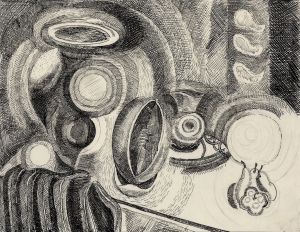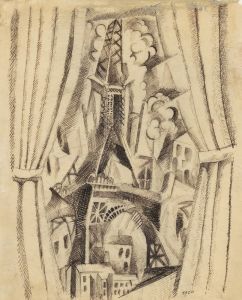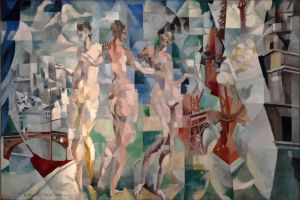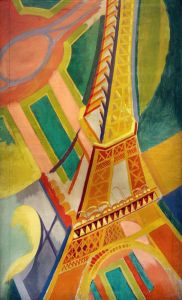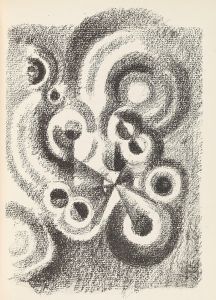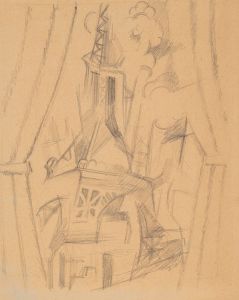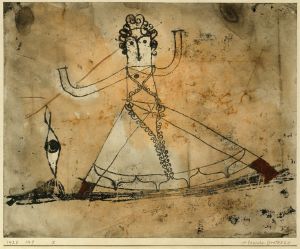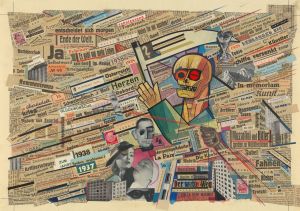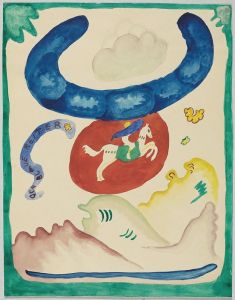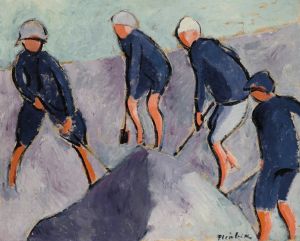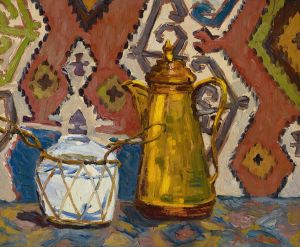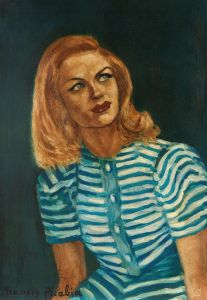
Étude pour l’Équipe de Cardiff
A hand-painted replica of Robert Delaunay’s masterpiece Étude pour l’Équipe de Cardiff, meticulously crafted by professional artists to capture the true essence of the original. Each piece is created with museum-quality canvas and rare mineral pigments, carefully painted by experienced artists with delicate brushstrokes and rich, layered colors to perfectly recreate the texture of the original artwork. Unlike machine-printed reproductions, this hand-painted version brings the painting to life, infused with the artist’s emotions and skill in every stroke. Whether for personal collection or home decoration, it instantly elevates the artistic atmosphere of any space.
Étude pour l’Équipe de Cardiff is a painting by the French artist Robert Delaunay, created in 1912-1913. Delaunay was a key figure in the development of abstract art and is best known for his work in the Orphism movement, which emphasized the use of strong colors and geometric shapes. This particular painting is part of a series that explores themes of modernity and movement, reflecting the dynamic changes occurring in society during the early 20th century.
The painting is inspired by the sport of rugby, specifically a match involving the Cardiff rugby team, which Delaunay witnessed. This subject matter is indicative of Delaunay's interest in capturing the energy and dynamism of modern life. The composition of Étude pour l’Équipe de Cardiff is characterized by its vibrant colors and fragmented forms, which create a sense of motion and excitement. Delaunay's use of color is particularly noteworthy; he employs a palette of bold, contrasting hues that contribute to the overall sense of rhythm and movement in the piece.
Delaunay's approach to this painting reflects his fascination with the intersection of art and technology. During this period, he was heavily influenced by the advancements in aviation and the burgeoning field of cinema, both of which informed his artistic exploration of movement and perception. In Étude pour l’Équipe de Cardiff, Delaunay translates these influences into a visual language that captures the essence of speed and modernity.
The painting is also a testament to Delaunay's innovative use of color theory. He was deeply influenced by the scientific studies of color and light, particularly the work of Michel-Eugène Chevreul and his theories on simultaneous contrast. Delaunay applied these principles to create a sense of depth and vibrancy, allowing the colors to interact dynamically on the canvas. This technique not only enhances the visual impact of the painting but also aligns with the Orphic ideal of using color to evoke emotion and convey meaning.
Étude pour l’Équipe de Cardiff is an important work within Delaunay's oeuvre, as it marks a transition from his earlier, more representational works to a style that embraces abstraction and the avant-garde. This painting, along with others in the series, demonstrates Delaunay's commitment to exploring new artistic frontiers and his desire to capture the spirit of his time.
Today, Étude pour l’Équipe de Cardiff is recognized as a significant contribution to the development of modern art. It exemplifies Delaunay's pioneering approach to color and form, as well as his ability to convey the energy and dynamism of the modern world. The painting remains an influential piece, reflecting the broader cultural and technological shifts of the early 20th century and Delaunay's role in shaping the trajectory of abstract art.






